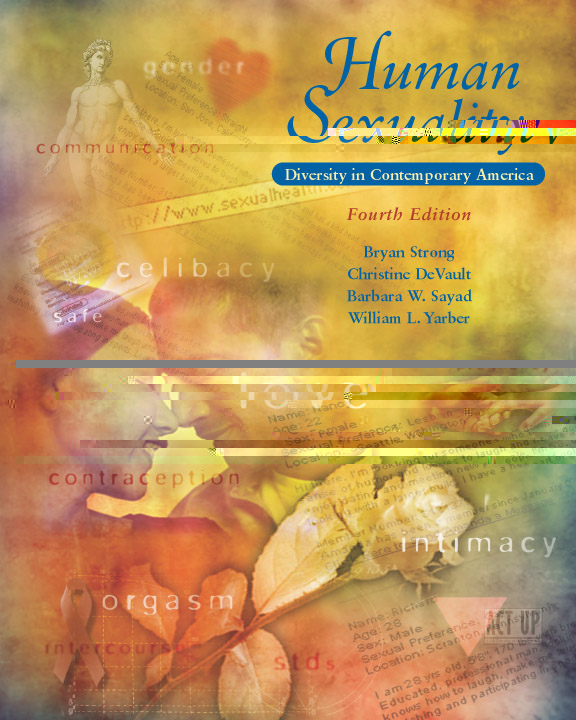| acquired dysfunction | A pattern that develops only after a period of normal functioning.
|
 |
 |
 |
| anodyspareunia | Pain occurring during anal intercourse.
|
 |
 |
 |
| delayed ejaculation | A sexual dysfunction characterized by the male's inability to ejaculate easily during intercourse.
|
 |
 |
 |
| dyspareunia | A female sexual dysfunction characterized by painful intercourse.
|
 |
 |
 |
| erotic aid or sex toy | A device, such as a vibrator or dildo, or a product, such as oils or lotions, designed to enhance erotic responsiveness.
|
 |
 |
 |
| female orgasmic disorder | The absence or delay in having an orgasm for women following normal sexual excitement.
|
 |
 |
 |
| female sexual arousal disorder | The persistent or recurring inability to attain or maintain the level of vaginal lubrication and swelling associated with sexual excitement.
|
 |
 |
 |
| generalized dysfunction | A pattern that occurs in practically all sexual situations.
|
 |
 |
 |
| hypoactive sexual desire (HSD)or inhibited disorder | A sexual disorder characterized by low or absent sexual desire.
|
 |
 |
 |
| inhibited ejaculation | A sexual dysfunction characterized by the male's inability to ejaculate despite an erection and stimulation.
|
 |
 |
 |
| internalized homophobia | Self-hatred because of one's homosexuality.
|
 |
 |
 |
| lifelong dysfunction | A dysfunction that is present from the beginning of sexual functioning.
|
 |
 |
 |
| male erectile disorder | The persistent or recurring inability to attain or maintain an adequate erection until completion of sexual activity.
|
 |
 |
 |
| male orgasmic disorder | The persistant delay in or absence of orgasm following a normal sexual excitement phase.
|
 |
 |
 |
| Peyronie's disease | A painful male sexual dysfunction, resulting in curvature of the penis, that is caused by fibrous tissue and calcium deposits developing in the corpora cavernosa of the penis.
|
 |
 |
 |
| PLISSIT model | A model for sex therapy consisting of four progressive levels: Permission, Limited Information, Specific Suggestions, and Intensive Therapy.
|
 |
 |
 |
| premature ejaculation | A sexual dysfunction characterized by the inability to control or delay ejaculation as long as desired, causing distress.
|
 |
 |
 |
| priapism | Prolonged and painful erection due to the inability of blood to drain from the penis.
|
 |
 |
 |
| pubococcygeus | A part of the muscular sling stretching from the pubic bone in front to the tailbone in back.
|
 |
 |
 |
| sensate focus | The focusing on touch and the giving and receiving of pleasure as part of the treatment of sexual difficulties.
|
 |
 |
 |
| sexual aversion | A sexual disorder characterized by a consistently phobic response to sexual activities or the idea of such activities.
|
 |
 |
 |
| sexual dysfunction | An impaired physiological response that prevents an individual from functioning sexually, such as erectile difficulties or absence of orgasm.
|
 |
 |
 |
| sexual enhancement | Improvement in the quality of one's sexual relationship.
|
 |
 |
 |
| situational dysfunction | A dysfunction that is limited to certain types of situations, stimulation, or partners.
|
 |
 |
 |
| spectatoring | The process in which a person becomes a spectator of his or her sexual activities, thereby causing sexual dysfunctions or disorders.
|
 |
 |
 |
| squeeze technique | A technique for the treatment of premature ejaculation in which the partner squeezes the man's erect penis below the glans immediately prior to ejaculation.
|
 |
 |
 |
| vaginismus | A sexual dysfunction characterized by muscle spasms around the vaginal entrance, preventing the insertion of a penis.
|
 |
 |
 |
| Viagra | The trade name for sildenafil, the first effective and safe oral drug for the treatment of male erectile disorder, whether caused by psychological or medical conditions.
|



 2002 McGraw-Hill Higher Education
2002 McGraw-Hill Higher Education